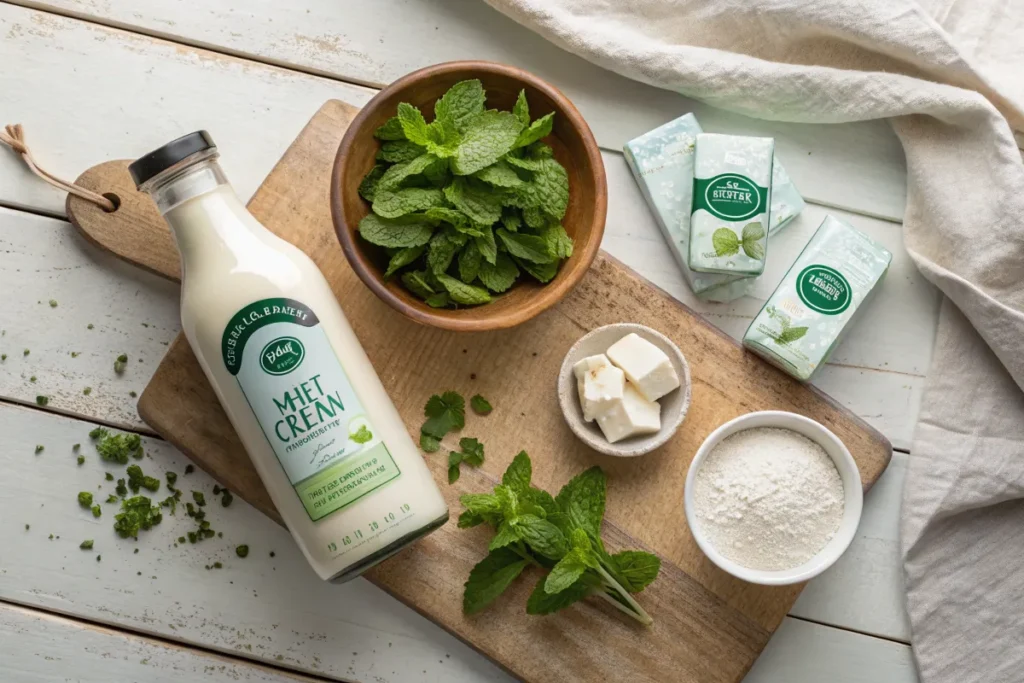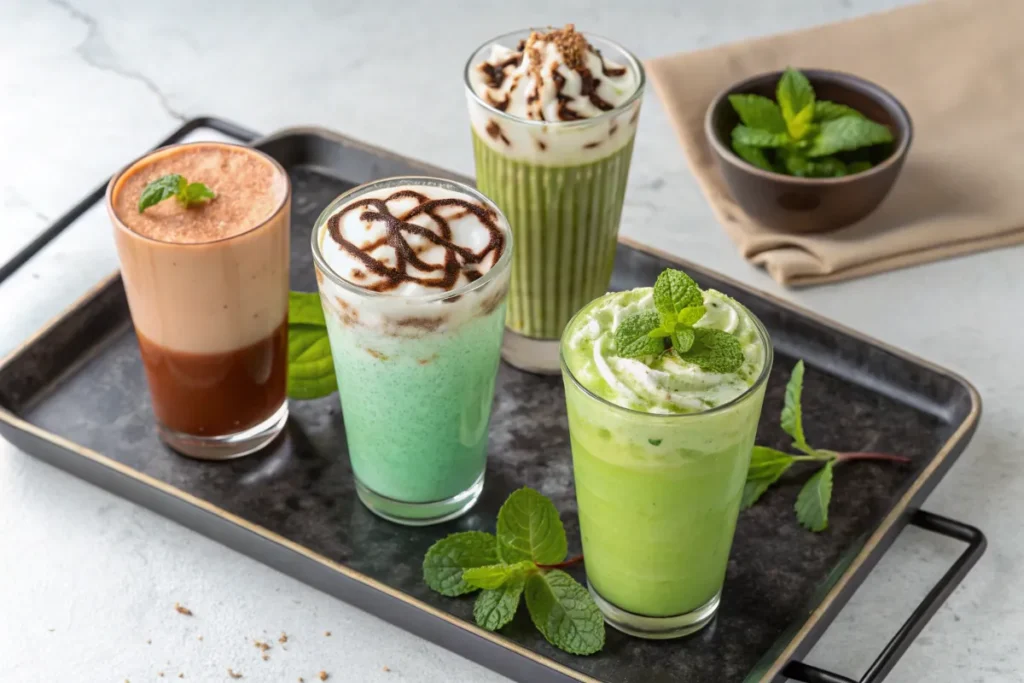A Fresh Take on a Classic Flavor
There’s something timeless about the invigorating aroma of mint. Whether in a warm herbal tea or a chilled dessert, mint delivers a crisp, cooling sensation that refreshes the palate and awakens the senses. In this guide, we’re diving into the Mint Cream Drink — a smooth, velvety, non-alcoholic beverage with a light minty kick, perfect for all seasons.
Forget cocktails laced with spirits — this guide is completely alcohol-free. We’ll explore the history of mint cream, its uses in drinks and desserts, and offer signature mocktail recipes that showcase just how versatile this drink can be.
What Is Mint Cream?
Mint cream is a smooth, sweet, and mildly minty beverage base made from a blend of dairy or plant-based cream and peppermint or spearmint extract. It can be enjoyed chilled, over ice, or blended into creative drinks and desserts.
Unlike syrups or extracts used sparingly, mint cream is rich enough to be a standalone drink while also flexible for culinary uses.
A Brief History of Mint Cream
Mint and cream have long been staples in kitchens around the world. Mint has ancient medicinal roots — used by Egyptians, Greeks, and Romans — while cream-based drinks became popular in Europe during the 19th century. The pairing of mint with cream likely evolved through dessert trends like ice cream and pudding, and eventually into café-style drinks.
In recent years, non-alcoholic mint cream drinks have gained popularity as luxurious yet refreshing alternatives to traditional hot chocolate or flavored lattes.
Key Ingredients and Flavors
A classic Mint Cream Drink includes:
- Heavy cream or coconut cream (or oat milk for dairy-free versions)
- Mint extract or peppermint oil (food-grade)
- Natural sweetener (like honey, agave, or maple syrup)
- Optional: vanilla, cacao nibs, or matcha for added complexity
The result? A smooth, creamy mouthfeel with a cooling mint finish — perfect for sipping or mixing.
Health Benefits of Mint-Based Beverages
Mint offers several benefits when consumed in moderation:
- Aids digestion
- Soothes headaches and congestion
- Freshens breath naturally
- Boosts mental clarity
Pairing mint with cream makes for a calming yet indulgent drink — especially useful as a caffeine-free afternoon pick-me-up.
If you enjoy herbal wellness drinks, explore our comprehensive guide to different kinds of tea for even more calming, caffeine-free options
How to Make a Mint Cream Drink at Home

Basic Recipe (Serves 2)
Ingredients:
- 1 cup milk or non-dairy alternative (almond, oat, coconut)
- ½ cup cream (or use full-fat coconut milk)
- 1 tsp natural mint extract
- 1 tbsp maple syrup or honey
- Ice (optional)
Instructions:
- Whisk all ingredients together in a shaker or blender.
- Serve over ice or chilled in a glass.
- Garnish with fresh mint leaves or a drizzle of honey.
Tip: For a frothy version, blend for 30 seconds with 2–3 ice cubes.
Looking for another cozy, spiced non-alcoholic drink? Don’t miss our Chai Latte guide — perfect for fall and winter comfort.
Signature Non-Alcoholic Mint Cream Mocktails

1. Mint Cream Iced Latte
- Add 1 shot of cooled espresso or chicory coffee to the base recipe.
- Serve over ice for a cool twist.
2. Frozen Mint Cream Float
- Blend mint cream with ice and top with a scoop of vanilla or coconut ice cream.
3. Chocolate Mint Swirl
- Mix 1 tsp cacao powder into the mint cream.
- Garnish with grated dark chocolate.
4. Matcha Mint Cream
- Whisk ½ tsp matcha powder into warm almond milk before adding to the cream base.
Seasonal Variations for Year-Round Enjoyment

Winter:
Serve warm with a touch of cinnamon or nutmeg for a cozy, minty treat.
Spring:
Blend with strawberry purée for a fruity garden twist.
Summer:
Serve over crushed ice with cucumber slices and fresh mint leaves.
Autumn:
Add a splash of pumpkin spice syrup for a creamy, herbal fall blend.
Prefer tropical vibes in summer? Our refreshing Virgin Piña Colada recipe is a must-try alongside your iced mint cream.
Pairing Ideas: Snacks and Desserts

- Lemon shortbread or biscotti – for crunch and contrast
- Vanilla cupcakes – complement the cool minty finish
- Chia pudding or overnight oats – topped with mint cream
- Fruit skewers or melon balls – fresh and hydrating pairings
Frequently Asked Questions
Can I use plant-based milk and cream?
Absolutely! Coconut cream and oat milk work beautifully.
Is mint cream suitable for children?
Yes — especially when using natural ingredients and avoiding added caffeine or artificial color.
Can I store mint cream in the fridge?
Yes. Store in a sealed jar for up to 3 days. Shake well before serving.
Is it sugar-free?
You can substitute sweeteners with stevia or date syrup to make it sugar-free.
Final Thoughts
The Mint Cream Drink is a timeless, versatile, and refreshing option for anyone seeking a luxurious non-alcoholic beverage. Whether served chilled on a hot summer day or warm during winter, it brings elegance, flavor, and comfort to your glass — without any of the alcohol.
So go ahead, blend, sip, and share a creamy mint moment with your family or friends — guilt-free and delicious.

